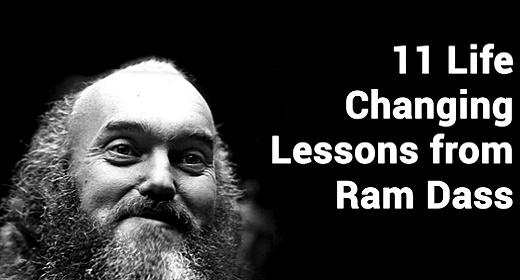by Raj Dasgupta, MD: You’ve been here before: Laying in bed, staring at your ceiling, wondering when you’re going to fall asleep…

You might be exhausted and begging for rest, but your mind just won’t cooperate. Well, you’re definitely not alone.
According to the American Academy of Sleep Medicine insomnia affects 30 to 35 percent of adults.
It’s frustrating, but you can actually combat sleeplessness just by using your breath! These breathing exercises for sleep can help you drift off to dreamland in no time.
You can count on the 4-7-8 breathing technique (based on yogic breathing) to help you catch some Zzz’s!
Try it:
- Gently part your lips.
- Exhale completely, making a big whooshing or sighing sound.
- Close your lips and inhale through your nose for 4 seconds.
- Hold your breath for 7 seconds.
- Exhale out of your mouth for 8 seconds, making the same whooshing sound.
- Repeat 4 to 8 times.
Bhramari pranayama breathing is yogic breathing that’s been proven in clinical studies to reduce heart rate, so you know it’s super calming!
Try it:
- Close your eyes.
- Breathe in and out deeply.
- Cover your ears with your thumbs.
- Place your pointer and middle fingers across your eyes.
- Gently put pressure on the sides of your nose with your ring fingers.
- Keep your lips sealed and breathe in and out slowly through your nose, making an om sound.
- Repeat for about 5 minutes.
Say that one five times fast. Just kidding — it’s time to breathe! Diaphragmatic breathing not only helps you relax to get to sleep, but it also strengthens your diaphragm, and important muscle for getting the most out of each breath.
Try it:
- Lie on your back and put pillows under your knees or sit up in a chair.
- Place one hand flat on your heart and the other on your stomach.
- Take deep breaths through your nose and feel your chest and stomach rise and fall as you breathe.
- Breathe slowly through slightly pursed lips for about 5 minutes.
Pro tip: The goal here is to slow your breathing so much that your chest doesn’t move, only your stomach, as you take each breath.
One part breath, three parts relaxation! This exercise is super easy to get the hang of which makes it a favorite for many.
Try it:
- Take a long and deep breath in.
- Breathe out, focusing on your body and how it feels as you breathe.
- Do this several times, slowing your exhale each time. Repeat until your exhale is twice as long as your inhale.
Find your Zen, even if you didn’t know you’d lost it. Buteyko breathing can bring you back to calm when your breathing has gotten so fast that it’s bordering on hyperventilation.
Try it:
- Sit up in bed and gently close your mouth. Breathe through your nose normally for about 30 seconds.
- Then, breathe more intentionally through your nose.
- Gently pinch your nose closed, keeping your mouth closed. Do this until you need to breathe again.
- Release your grip and take another deep breath through your nose.
- Repeat a few times as needed.
Box breathing, or square breathing, is often used in meditation and it’s a powerful tool to use against anxiety. The same technique can be used to calm yourself down before sleeping.
Try it:
- Lie in bed or sit up with your back straight.
- Inhale through your nose for 4 counts.
- Hold your breath for 4 counts.
- Exhale out of your mouth for 4 counts, making sure to get all of the air out of your lungs.
- Hold your breath for 4 counts.
- Repeat this as many times as needed.
The Papworth method is used to help you breathe more naturally, reducing yawning and sighing. Did you just yawn reading that? You probably did.
Try it:
- Sit up straight.
- Breathe out of either your mouth or your nose, focusing on counting to 4 with each inhale in a methodical manner.
- Keep your focus on your stomach rising and falling, listening to the sounds your breaths make.
If the breathing exercises aren’t working for you, don’t worry. There are other ways to get yourself to sleep!
Melatonin
Your body already produces melatonin — a hormone that signals to your body that it’s time to sleep — so, it’s all natural! If you want to try taking melatonin to sleep, start with a dose of around .5 milligrams up to 3 milligrams taken 2 hours before your desired bedtime.
With melatonin it’s all about the timing and not the dose. Melatonin is not a potent sleep aid but really helps in shifting your circadian rhythm in the right direction if taken appropriately. Always consult with your doctor to make sure melatonin doesn’t interact with any of the medicines you’re already taking!
Lavender
Here’s a little aromatherapy for you! Studies have shown simply smelling lavender can help put people to sleep.
You can diffuse lavender essential oil in your bedroom or try spraying lavender sleeping spray onto your pillow so you fall into a bed of lavender every night (just make sure it’s actual lavender essential oil and not an artificial “fragrance”).
Valerian root
Valerian root is an herb commonly used to help curb anxiety and promote good sleep. An older 1985 study showed that participants felt they fell asleep faster after taking 450 milligrams and 900 milligrams of valerian root.
You can take this supplement by capsule 30 minutes before bed or you can steep 2 to 3 grams of dried valerian root in hot water for 10 minutes for some DIY sleepy tea.
Counting sheep isn’t the only way to get to sleep. Breathing exercises like box breathing and other natural aids like lavender can have you snoozing in no time. But if you’re still struggling to get some rest, talk to your doctor about exploring other options for your best night’s sleep.









































